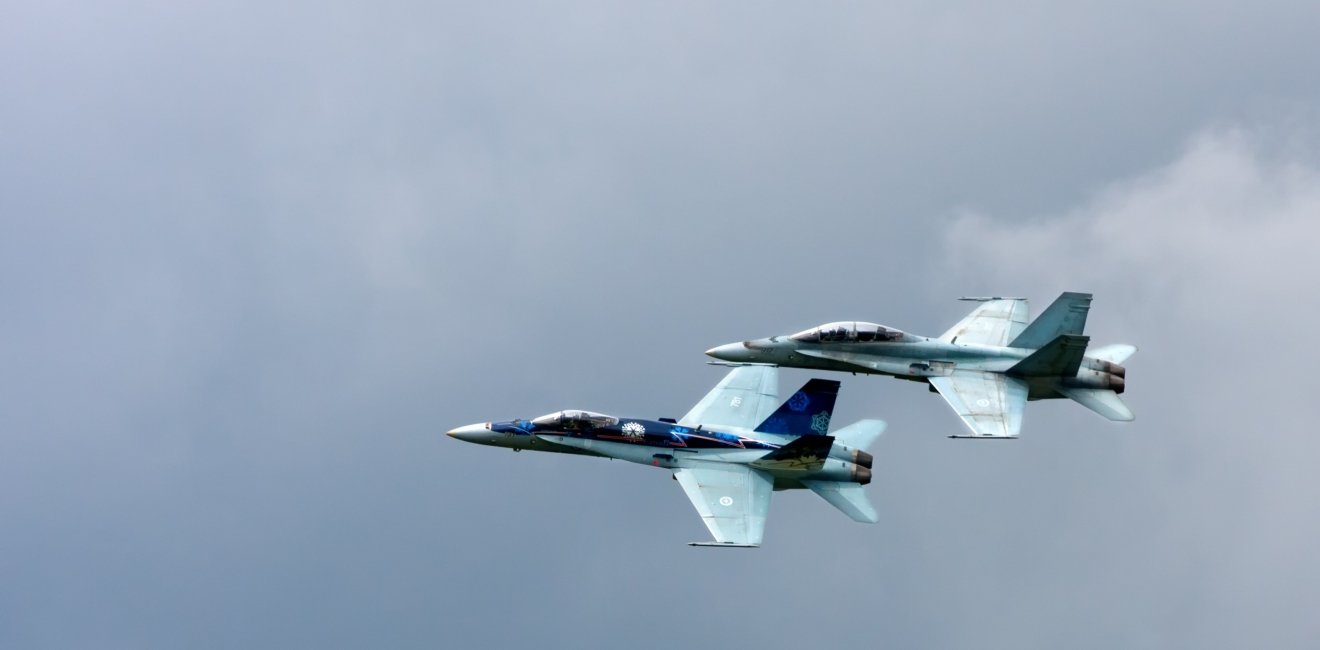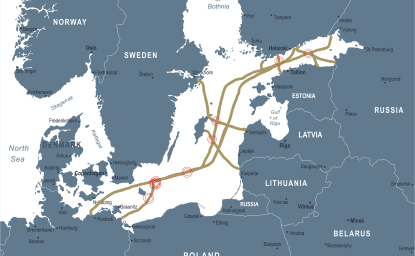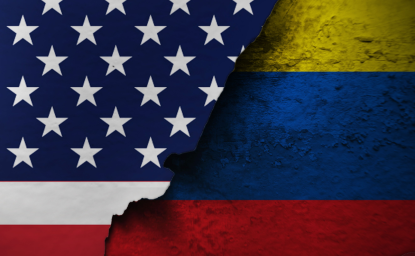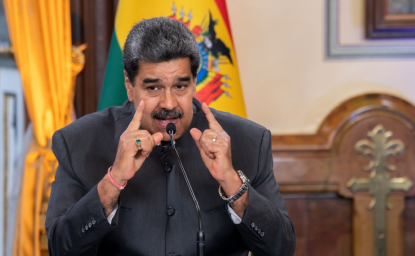As Canada struggles with COVID-19 and its economic fall-out, issues which otherwise might command public attention have largely gone underground. Among them is the long-pending decision on which new fighter aircraft it should buy, where discussion has been largely relegated to specialty aviation publications and websites. Meanwhile, the Department of National Defense keeps mum as it considers the bids of two American manufacturers—Lockheed Martin, which offers the F-35 Lightning II, and Boeing, which offers the F/A-18 Super Hornet, and one Swedish, Saab, which offers the JAS-39 Gripen.
The Long and Winding Road
The effort to find a replacement for Canada’s existing fleet of CF-18 Hornet fighters, which date from the early 1980s, began in earnest during Steven Harper’s government, when he announced his intention to purchase the Lightning II without allowing other fighters to compete. In the face of severe criticism that costs were greatly under-estimated, most tellingly from the Office of the Auditor General, the decision was reversed.[i] In his 2015 campaign, Justin Trudeau explicitly ruled out the Lightning II in favor of something “more affordable.”[ii]
Once in office the Trudeau government announced that Canada would purchase eighteen Boeing Super Hornet fighters as “interim” replacements to meet urgent needs, but then reversed itself after Boeing filed a claim with the U.S. International Trade Commission against civil aircraft manufacturer Bombardier, asserting that it had received illegal subsidies from the Canadian government and was dumping aircraft below cost in a sale to Delta Airlines. Boeing lost its case before the Commission, rendering the issue moot.[iii] Ultimately, a majority share in Bombardier was sold to the European Airbus consortium. Unfortunately for Boeing, the Super Hornet deal was not revived, but after the Trudeau government decided in November 2016 to address the fighter purchase issue by holding a new competition to purchase 88 aircraft, it was allowed to participate in the bidding. To bridge the gap until a new fighter is purchased, Canada has bought 25 used Hornets from Australia (which is taking delivery of new F-35s).
While French manufacturer Dassault was interested in selling its Rafale fighter and the pan-European “Eurofighter” consortium its Typhoon, both dropped out of the competition. The Rafale was considered to be insufficiently interoperable with U.S. aircraft[iv] and the Typhoon was burdened by questions regarding the cost of meeting security requirements, given that its manufacture and supply chain was outside of the U.S. and Canada.[v] There was also concern that Canada had revised the bidding specifications regarding local manufacturing offsets in ways which favored the F-35, which was now very much back in the running.
While the Department of National Defense has remained silent while it reviews the bids (each of which may be as much as 7000 pages long), aviation journalists, think tank writers, and aircraft enthusiasts have sought to handicap the race. The reality is that a decision depends not only on price and capabilities, but also on the role given to domestic industry and on purely political concerns, both international and domestic.
Will Lightning Strike?
Lockheed Martin’s F-35 Lightning II is the only true “fifth generation” aircraft in the race, with stealth technology, which makes it nearly invisible to hostile radar until it comes very close, as well having advanced radars, helmet displays and other cutting edge systems that would make it a formidable opponent for any foe it is likely to confront. The real problem is cost, with the published “fly away” figures varying from US$80 to 110 million per plane, and total maintenance likely the highest of the three competitors.[vi] Thus sticker shock has always been a real issue, especially as Canada is also seeking to rebuild its navy, which had languished for decades even as it racks up deficits to keep the economy functioning in the face of COVID 19.
Canada paid to be part of the original multinational group of potential users and, as such, has been an important supplier of inputs for the plane with US$2 billion going to 110 Canadian suppliers, according to Lockheed Martin.[vii] However, Canada would be less likely to receive future contracts if it were to choose another fighter. Given the deep relationship between the USAF and the RCAF, this U.S.-made aircraft is reportedly the favorite of many within the latter organization. The fact that air forces from Australia and Japan to Poland and Denmark are buying the aircraft would be helpful to Canada, should it want to train or fight together with them.
Sting of the Super Hornet
Boeing’s F/A-18 Super Hornet is not as stealthy as the Lightning II, although effort has been made to reduce its radar signature from that of the original Hornet on which it is based.[viii] It is a major element of U.S. air power, with 600 in service to the U.S. Navy. Unlike its competitors, it is a two engine aircraft, which its proponents argue means it would be safer to operate in the distant reaches of the Arctic, where it would be hard to return to base quickly in the event of trouble. It has a range of advanced radars and other electronic systems and can provide mid-air refueling to other Super Hornets. Perhaps most importantly, its fly away costs are distinctly cheaper at US$65-70 million per unit. Its roots are in the original Hornet, which Canada currently flies, making for some useful overlap in terms of pilot skills and aircraft maintenance.
Given that it first entered service in 1999, the Super Hornet is arguably a bit long in the tooth for a country like Canada, which, to judge by history, is not likely to purchase a successor for many years. By contrast, the Lightning II is just beginning to enter service globally. The U.S has bought more Super Hornets in recent years and sales are ongoing to other nations, although the U.S. Navy looks to cease purchases and wants to devote the savings to development of a future aircraft.[ix] It is worth noting that, while the bad feeling which Boeing engendered with its claim against Bombardier has not prevented it from competing, in the latest budget the Trudeau government has included language allowing it to evaluate whether companies that wish to sell to it are engaging in “economic damage” to Canada.[x]
A Saab in Canada’s Garage?
The Saab JAS-39 Gripen is reportedly the cheapest of the three competitors with flyaway costs seemingly around the US$60 million range, although some estimates judge the new E version’s price to be comparable to that of the F-35. That said, its maintenance costs are generally considered to be the lowest of the three.[xi] The Gripen airframe is not configured for stealth, but instead relies on advanced avionics to reduce its signature. Saab also touts the fact that as electronics advances, it is designed so systems can be replaced relatively easily. The new version of the Gripen is said to have the longest range of the three competitors, meaning it can loiter over distant airspace, such as the high Arctic, for longer periods. Designed to meet Sweden’s own conditions, the Gripen can be based at relatively small, rugged airfields with smaller support teams.
On the downside, how well it would do against a top of the line hostile aircraft with stealth capability is an open question, especially as the Gripen E version is only now becoming operational. Saab is selling hard the industrial benefits it would provide, asserting that extensive research and manufacturing would take place in Canada.[xii] Still, the issue arises of whether Canada should buy from a non-U.S. (indeed, a non-NATO) country given its uniquely close defense relationship with its southern neighbor. The Gripen’s engines are made by General Electric and its landing gear by the UK’s BAE, and several NATO countries have purchased Gripens. Hence, Saab argues, there would be no interoperability issue. Nonetheless the Canadian government would have to consider how turning down either of two major U.S. manufacturers would be viewed in Washington.
To Govern is to Choose...
If one is buying a car, before taking into account factors such as price and reliability, one must ask to what purpose it will be put, be it driving one’s children to soccer practice, commuting to work, taking long vacations in rugged terrain or some combination of all of them. So it is with Canada’s fighter aircraft purchase. There are four major purposes for which Canada needs a fighter: protecting its airspace, notably the Arctic, from a foreign aggressor, (i.e. Russia) either in a genuine war or just deterring it from peacetime intrusions; participating in NATO’s traditional deterrence mission, again against Russia, as, for example through Canada’s participation in Baltic and Black Sea air patrols; participating in coalitions against smaller states, such as its actions in Serbia, Libya and Iraq/Syria; and lastly joining with the United States in protecting North America against 9/11-type terrorism.
Patrolling North America against a terrorist hijacker does not require the ultimate in fighter capability- such patrols go forward as part of NORAD’s responsibilities under the rubric of “Operation Noble Eagle. The same may be true for participating in a coalition against a less developed adversary, although even a relatively poor country may have been provided with advanced air defense systems. Serving as a meaningful deterrent against a “pacing competitor,” such as Russia (or even China), may call for a higher end solution. If the goal is merely to see off some Russian planes, which are misbehaving during peacetime, lower capabilities may do the job. But even then, is the aircraft which is best for patrolling the vast spaces of the Arctic or Pacific also right for the short distances of Europe? And, of course price, both initial and long term, is a consideration, as are the benefits to local industry and relationships with allies. To govern is to choose, as the saying goes. Since no aircraft is perfect for all missions, the choice is at some level an exercise in risk management.
How will the fighter purchase saga unfold? With the decision due at some unknown time in 2022, it is likely to be after the next election. If Justin Trudeau remains in office, will he swallow hard at the F-35 price tag and leave his earlier objections in the rear view mirror? Will the government instead go for the Super Hornet, as a widely used compromise with significant capabilities, and forgive Boeing’s temerity in challenging the Bombardier subsidies? Or will the lower priced Swedish Gripen get the nod, as the right pick for Canada’s unique needs despite non-NATO origin?
And what would a Conservative government do? Would it harken back to the Harper days and decide for the costly, high-powered F-35 Lightning II? Would it demand yet another review and change the standards for a decision? And what if there is another minority government? The NDP has expressed support for a new fighter purchase although it is no fan of the F-35, while the Greens are opposed to any purchase at all.
...Or Not?
Is it possible that, given the economic fall-out from the COVID crisis, a Canadian government might simply punt even further, making do with its current fleet of Hornets, improved with some equipment upgrades and the used Australian aircraft? Such a non-decision (while in keeping with how the issue has been managed in the past), would leave Canada’s role in defending the North American homeland ever more marginal and make it harder to either support NATO’s deterrence or take part in out-of-area operations, as it has done in the recent past. The temptation may exist to keep the current fleet in the air even longer, until something else—sixth generation fighters or advanced drones—comes along, although this could mean decades without any replacement for the Hornets. What fighter Canada decides to buy is its own business, of course. That it make a decision is very much a subject of interest to the United States and Canada’s other allies.
Richard M. Sanders is a Global Fellow of the Woodrow Wilson Center’s Canada Institute. He is retired from the Senior Foreign Service of the U.S. Department of State. He has served as Charge d’Affaires and Deputy Chief of Mission at the U.S, Embassy in Ottawa and at the Pentagon as Foreign Policy Advisor to the Chief of Staff of the U.S. Army.
[i] “2012 Spring Report of the Auditor General of Canada, Chapter 2, Replacing Canada’s Fighter Jets.” oag-bvg.gc.ca.
[ii] “Justin Trudeau vows to ditch F-35 in favour of ‘more affordable’ fighter jets and a ‘leaner’ military.” National Post. September 21, 2015.
[iii] “In fight over Bombardier CSeries Boeing loses friends as well as tariff case.” Seattle Times. January 26 2018.
[iv] “Dassault withdraws from Canada fighter comp.” World of Aviation. November 11, 2018.
[v] “Typhoon withdrawn from Canadian fighter competition.” Skies. August 30, 2019.
[vi] “The price of the F-35 has been falling but it could hit a wall soon.” Defense News. July 23, 2020.
[vii] “How selecting the Lockheed Martin F-35 could impact Canada’s economy.” Skies. August 12, 2020.
[viii] “How stealthy is Boeing’s new Super Hornet?” Defense News. April 18, 2018.
[ix] “Navy cuts Super Hornet production to develop next generation aircraft.” U.S. Naval Institute News, February 11, 2020.
[x] “Federal budget resurrects ‘economic harm’ warning as fighter jet contract nears.” CBC News. April 20, 2021.
[xi] “This is the iconic European fighter that can operate anywhere.” We Are the Mighty. April 29, 2020.
[xii] “Gripen E: Saab offers made-in-Canada fighter jet solution.” Canadian Defence Review. June 25, 2020.
Author

Former member of the Senior Foreign Service of the U.S. Department of State

Canada Institute
The mission of the Wilson Center's Canada Institute is to raise the level of knowledge of Canada in the United States, particularly within the Washington, DC policy community. Research projects, initiatives, podcasts, and publications cover contemporary Canada, US-Canadian relations, North American political economy, and Canada's global role as it intersects with US national interests. Read more





